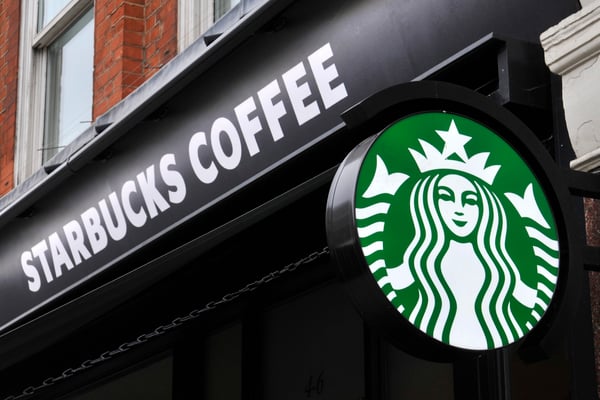Have you ever visited an online store and been confused by its brand? Maybe you thought you were shopping at a trendy store targeting millennial women, but you're bombarded with stock images that show otherwise. Or maybe you visit a site looking for a wedding tux, but the stock photos on the website look more fun and whimsical than classy and formal.
While these examples might be a bit hyperbolic, they drive home the point that tailored brand messaging really matters. Messaging is especially important for online merchants. Traditional brick and mortar retailers have storefronts, signage, and employees to educate customers on their brand, but ecommerce merchants don’t share the same luxury.
Online retailers must get across their marketing message in a limited number of cohesive and concise webpages. Because of the limited space, merchants must pay special attention to the quality of their message and ensure they are aligning their company with their customer.
A strong and consistent brand can be a massive differentiator and source of competitive advantage. A study by Business 2 Community suggests that something as simple as colors could influence a buyer decision by up to 85%.
Brands should have cohesive messaging so that shoppers can easily understand the company and what you’re selling.

Tailoring a Message
Before you begin to tailor your message, develop an in-depth understanding of your target customer by gathering important customer data. This data can provide insights into customer buying preferences, resulting in opportunities for customization based data analytics.
Buzz words, relatable visuals, and other important messaging components differ by demographic. Merchants should seek to collect data about their target demographic, in order to can enhance the shopping experience.
Monitoring Customer Activity
One of the easiest ways to collect customer data is to monitor customers' real time interactions with your website. By monitoring interactions, ecommerce retailers can gain insights into customer purchasing preferences, spending habits, and customers' ideal shopping experience.
Purchasing preferences can telling you which products your customers like the most and the products they can do without. Merchants should pay close attention to products that underperform. Underperforming products can waste a business's resources and make it harder for customers to find desired products. Removing these products can clean up ecommerce stores, leading to a more pleasant shopping experience.
Data can also give merchants information about customer shopping experience preferences. If you find your customers have quick active shopping sessions, you should build your online experience to reflect that. Make the website simpler to navigate, allow customers to complete the entire shopping experience in a few clicks.

Amazon is a successful example of recognizing customers' need for speed and responding with its brand and website interface. In 1999, the internet giant patented its one-click streamlined and built a massive branding campaign to highlight the website's ease of use. Now with that Amazon's patent has expired, merchants with customers shopping in a hurry can implement one-click processes of their own.
Just Ask!
One of the most effective ways of collecting high-quality data is to simply ask. Many companies open the door to communication with their customers by giving them the option to build a profile, which can include age, gender, profession, hobbies, etc. Aggregating profile data can provide a clear picture of who you're selling to.
Having a fleshed out picture of customers can be extremely helpful. Merchants can use new information on their demographic to match brand imagery to their customer. If you find your average customer is men aged 40+, choosing stock photos, color schemes, and language that matches the age-group can go a long way in increasing customer comfort with your site.
Above all, it's important that customers know that any personal information will be kept private and is for their benefit.
Apple, a company consistently ranked one of the best brands in the world, is a great example of a cohesive brand that reflects its customer base. There's a lot to learn from Apple's brand messaging. Apple.com's sleek, black and white outlined, and futuristic interface closely matches the feel of their popular products and appeals to their wealthy and future oriented target demographic. As a result of their strong branding effort, the Apple.com is the 33rd most popular website in the US.
![]()
How Messaging leads to Retention
Tailored messaging gives shoppers a sense of comfort with ecommerce retailers. The more comfortable a customer is with a site the more likely they are to return. Academics and researchers call this concept channel stickiness.
Stickiness is basically a business's ability to keep customers coming back in a landscape with increasing alternatives. There are several factors that contribute to channel stickiness, but the biggest factor is a business's relationship with its customer. Targeted messaging is the first step toward building this solid relationship.
According to a study done by Key Difference Media, 78% of customers view a retailer with a custom message as more trustworthy. Like any relationship, trust is an important linkage for merchants and consumers. Every seller boasts of their products advantages over competition, but buyers are more likely to believe you if you say it using the language and images they understand.
After you've convinced your customers to believe in your product, messaging efforts will immediately begin to pay for themselves as casual shoppers convert into loyal customers. Loyal customers spend an average of 30% more during their relationship with a company than their less loyal counter parts.
There's a reason the best companies in the world spend significant amounts of capital investing in their messaging and cultivating their marketing efforts. The best way to keep existing customers and to appeal to new ones is make them feel special by reaching out to them in a customized way.




